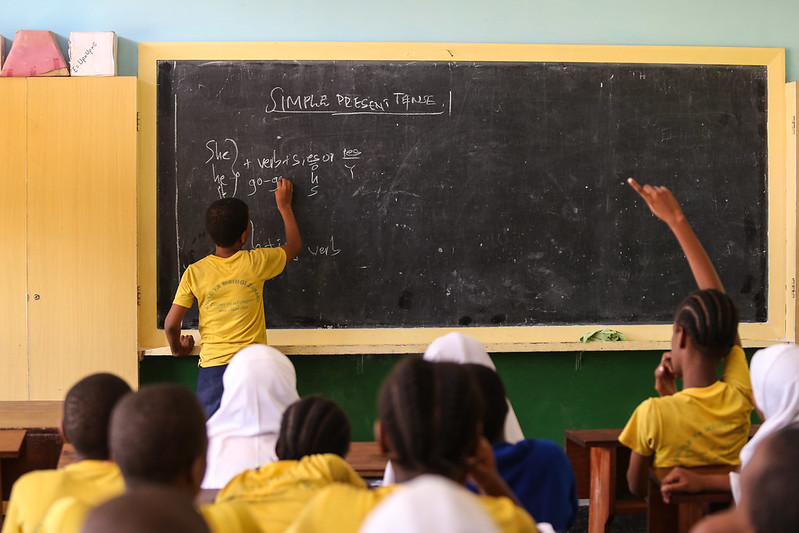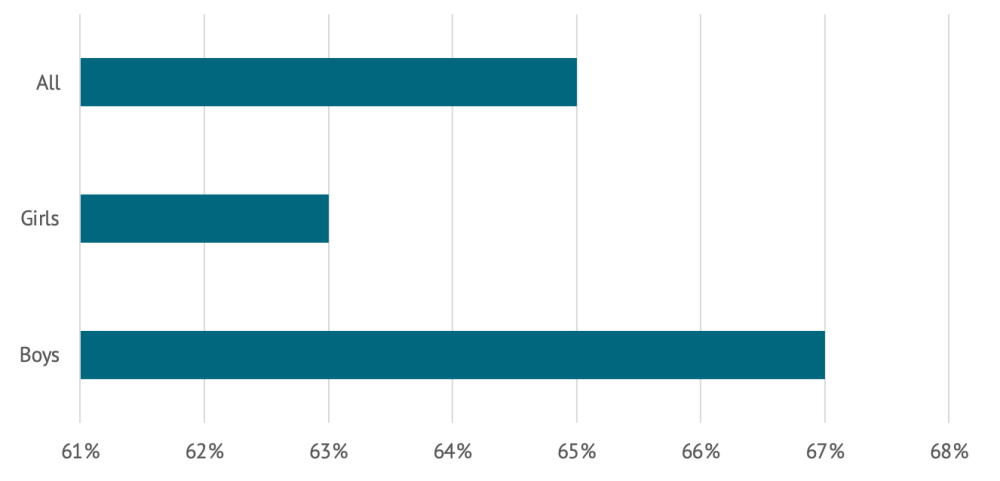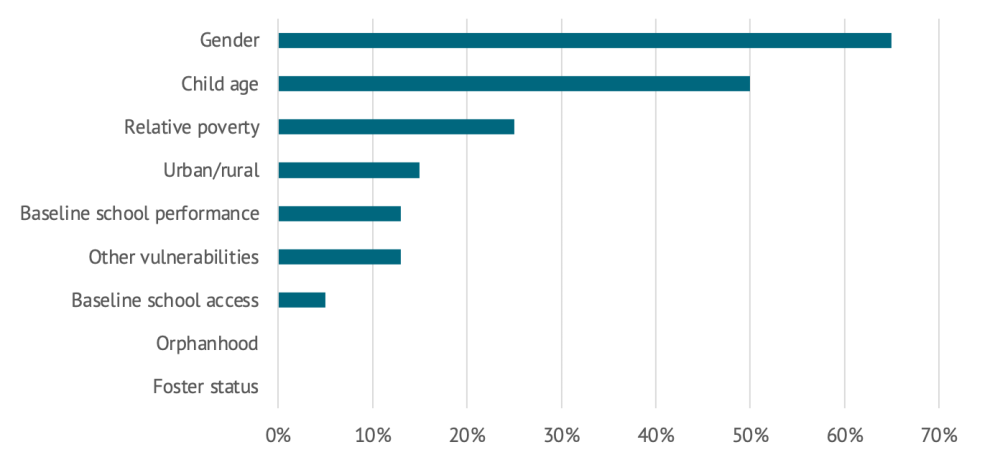Recommended

WORKING PAPERS
With increased focus on the shortfall in learning outcomes around the world (the “learning crisis”!), one might assume that just about every child is in school, or at least that every young child is in primary school. But sadly, that’s not the case: in low-income countries, just two-thirds of children complete their primary education!
How many children complete primary school in low-income countries?
Source: World Development Indicators
Even though primary education is ostensibly free in almost all countries, it’s never really free. There are often unofficial fees levied to parents by school committees as well as the opportunity cost of keeping kids in school, which is lower but not zero from primary school children, especially in the upper grades.
Enter cash transfers, which have a long track record of boosting education for poor children! How long is the track record? In our new paper—“The Education Impacts of Cash Transfers for Children with Multiple Indicators of Vulnerability”—we look at two recent reviews of the impact of cash transfers on educational outcomes—one by Baird and co-authors and another by Bastagli and co-authors—to identify 101 studies. The reviews find positive impacts for educational access for both conditional and unconditional cash transfers, and there is growing evidence of positive long-term impacts.
Most of these studies examine the impact on the average child to whom cash transfers are delivered. Cash transfers are usually targeted to children in poor households (which is different from targeting poor children), and that’s a good start for capturing the vulnerable. But many children face multiple vulnerabilities. They’re not only poor enough to merit inclusion in a cash transfer program, but they’re also girls in an environment where girls have fewer educational opportunities. Or they’re not only poor, but they also struggle in school, and so are more likely to get pulled out or to drop out when resources are scarce. In various countries, for example, girls in poverty are more at risk of dropping out than either girls or children in poverty in general.
How many children are enrolled in school at each grade level, by gender and poverty level?
Source: Analysis of Demographic and Health Surveys by Mendez Acosta.
Yet relatively few studies of the impact of cash transfers on educational outcomes focus on multiple vulnerabilities. In addition to poverty, which—again—most cash transfer programs already use to target, only two-thirds of studies report outcomes by gender. Only one quarter look within recipients at the poorest of the poor. Only 13 percent look at impacts differentially based on children’s access to school at the outset of the program, and even fewer (5 percent) look at differential impacts by school performance.
What proportion of studies of cash transfers on education show impacts for these sub-groups?
Source: Table 9 in Evans, Gale, and Kosec 2020.
In our study, we examine the educational impacts of conditional cash transfers in Tanzania both for the average recipient child—targeted by poverty status—and for children with additional indicators of vulnerability. We find that for the average child in the program, school participation goes up by 10 percentage points after 2.75 years of transfers (relative to a baseline of 74 percent). The proportion of children who complete primary school because of the program is sizeable: we estimate a 16-percentage-point increase. (Our estimates suggest a similar increase in secondary school enrollment, but those estimates are less precisely estimated and so are not statistically significant.)
When we examine impacts for children with additional indicators of vulnerability, we find suggestive evidence that the effects are not distributed equally. Boys and girls have roughly similar impacts, but we find suggestive evidence that the poorest children are driving the school participation effects, while the less poor are driving the primary school completion effects. It may be that cash transfers help the poorest children to get into school and the less poor children to get through school. By the end of the evaluation, we see larger effects for orphaned children on school completion, and larger effects for non-orphans on school participation. We also observe much larger point estimates for primary completion among the 26 percent of students who had sat for and passed their Standard 4 exam (i.e., the test they took in fourth grade) at the beginning of the study.
We don’t have an enormous sample to estimate each of these sub-group effects, so while it is often the case that an effect is larger in magnitude for one group, and possibly statistically significantly only for that group, it is also often the case that the differences between groups are not statistically significant. But our findings provide suggestive evidence that cash transfers have different impacts for different groups of learners—and thus that it is important to pay attention to varying vulnerabilities within an already vulnerable population. Countries may wish to supplement general cash transfer programs with targeted support for children who face multiple indicators of vulnerability, to makes sure those children get an education.
Disclaimer
CGD blog posts reflect the views of the authors, drawing on prior research and experience in their areas of expertise. CGD is a nonpartisan, independent organization and does not take institutional positions.











